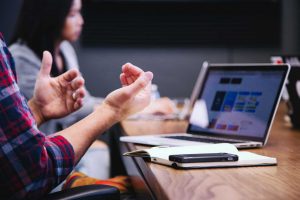Last updated on: May 20, 2025
Did you know that the nonprofit sector contributes nearly a trillion dollars a year to the U.S. economy? The work they do is vital, but many nonprofits struggle with productivity and effective time management. Poor project management can cripple a nonprofit organization, as many already operate on a shoestring budget and have no time to spare. The good news is that any nonprofit can improve their time management with a few basic nonprofit project management adjustments.
- Prioritize
You’re never going to complete all of the tasks that you want to get done. The sooner you accept that the sooner you can start prioritizing. Gather all of your key decision-makers and start outlining your goals and tasks in order of importance:
- What are the things that absolutely have to get done?
- The things that should get done?
- The things you’d like to get done?
- And the things that are of limited importance?
Highlight your key objectives, and build a company-wide calendar that organizes tasks in order of importance. Make sure that your whole team is on the same page. If you don’t get to the low-priority items, you won’t be at a significant disadvantage.
- Delegate
Are you trying to take on the brunt of the work yourself? If you’re in a leadership position, this is especially problematic. It’s important to take inventory of your team members’ strengths and delegate accordingly.
In some cases, it may be in your best interest to invest in a contractor or entry-level employee to take on some of the day-to-day tasks that require less education and experience. Tasks like data entry and basic research can often eat up a lot of your time when they’re just as easily delegated to someone else. When it comes to the more complex tasks, you may have seasoned members on your team with bandwidth to spare. You don’t want to overwork anybody, but you do want to make the most efficient use of everyone’s time.
Finally, consider outsourcing tasks like payroll and bookkeeping services, as this will allow you to focus on what you do best.
- Automate Where You Can
You’re probably dedicating hours to tasks that can be automated. For example, you can schedule social media posts using a client like Hootsuite. You can reduce your copy-editing time by using an automated editor like Grammarly. You can use a program like Zapier to link your web apps for smoother automated workflows. There are even AI platforms that can automate some of your scheduling and public relations.
Determine which tasks are eating up an inordinate amount of time, and determine if there’s a tool that can automate some or all of the operation. It may surprise you how much time you can save using inexpensive or even free software for everyday tasks.
- Use Nonprofit Project Management Tools Effectively
The best way to optimize your time management is to keep everyone on task. The best way to keep everyone on task is to use a premium nonprofit project management platform like Basecamp, Asana, or Trello.
Ensure that everyone on your team is signed on to the platform, and then divide your ongoing projects into tasks. Assign the appropriate people to each task, set deadlines, and ensure that each team member updates their respective tasks with status reports on a regular basis. When you do this, you’ll quickly be able to identify any weaknesses in your time usage—be they tasks or personnel. Which leads us to our next point…
- Audit Your Workplace for Inefficient Time Use
Not every task is an intelligent use of time. Take some time to identify how much time is being allocated to each project, each routine, and each operation (your nonprofit project management software can be a huge help here). Then determine if time is being wasted on tasks that are low-priority.
For example, you might find that you’re spending five hours a week on social media even though it’s been designated a low-priority task. When you find the weak links, scale them back, or cut them loose.

- Minimize Meetings
To expand on the last point, meetings represent one of the biggest time and productivity killers. Before scheduling a meeting, ask if it’s really essential. Is it something that could be hashed out via email? If it does prove essential, set a time limit. Each minute your team spends in meetings is a minute that they could be spending on essential tasks.
- Use Breaks Effectively
Whether you’re trying to improve your own time management or you’re training your team to balance their own time, you want to encourage a level of focus that will yield the best productivity. The Muse conducted internal research and developed the 52-17 rule. They found that the greatest productivity was achieved when workers dedicated 52 minutes of intense focus followed by a 17-minute break.
Similarly, the Pomodoro Method encourages 25 minutes of uninterrupted work followed by a 5-minute break (rinse, repeat). When optimizing project management for your nonprofit organization, explore what works best for yourself or your team.
Tell Us Your Nonprofit Project Management Hacks
Developing effective time management is a skill that must be gradually honed and constantly exercised. How do you remain productive and effective in your nonprofit? Let us know your nonprofit project management hacks!
And if you need additional assistance, BryteBridge Nonprofit Solutions can assist you with strategic plans to help you get the most from your organization using the time and resources that you have. Reach out to us to learn more!



